
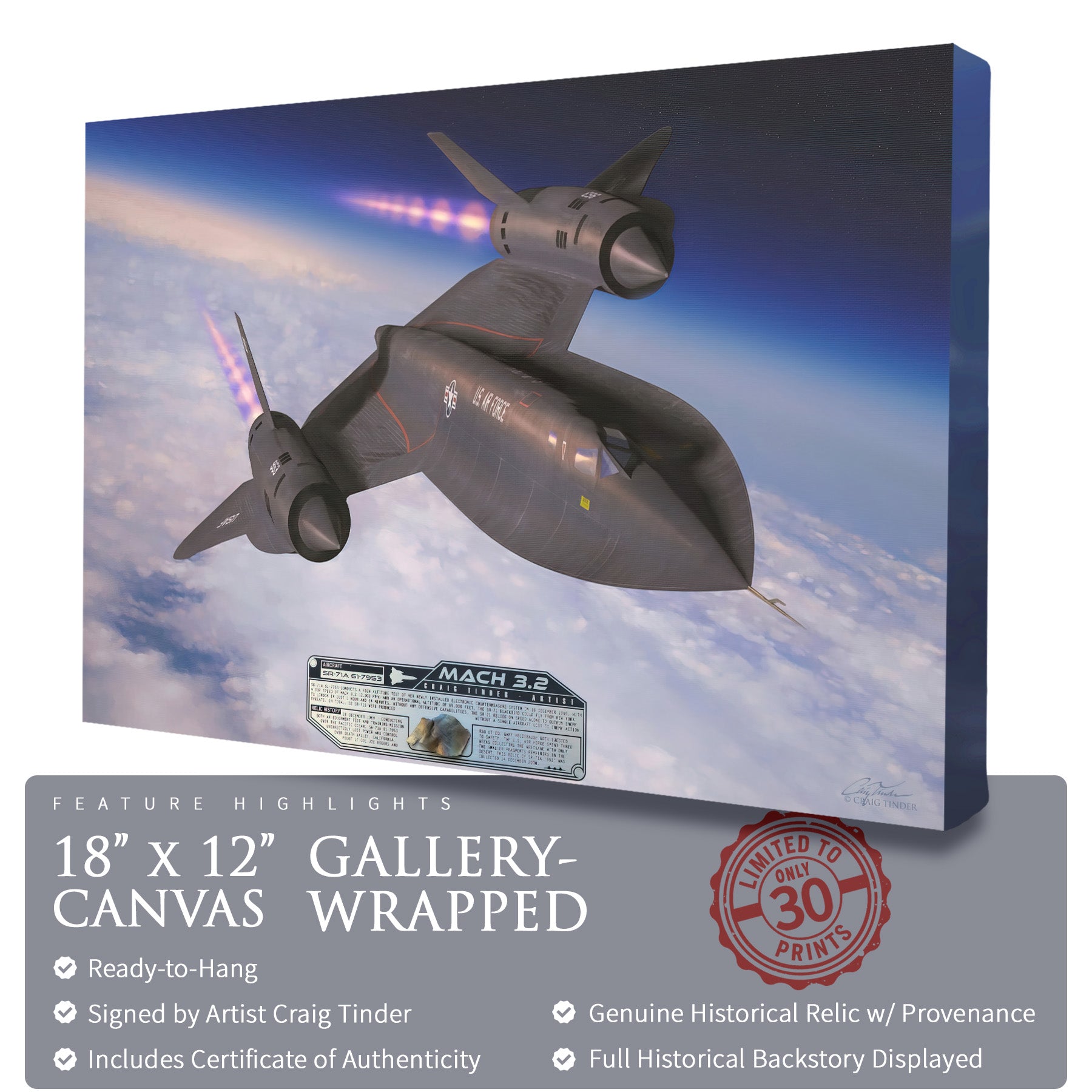

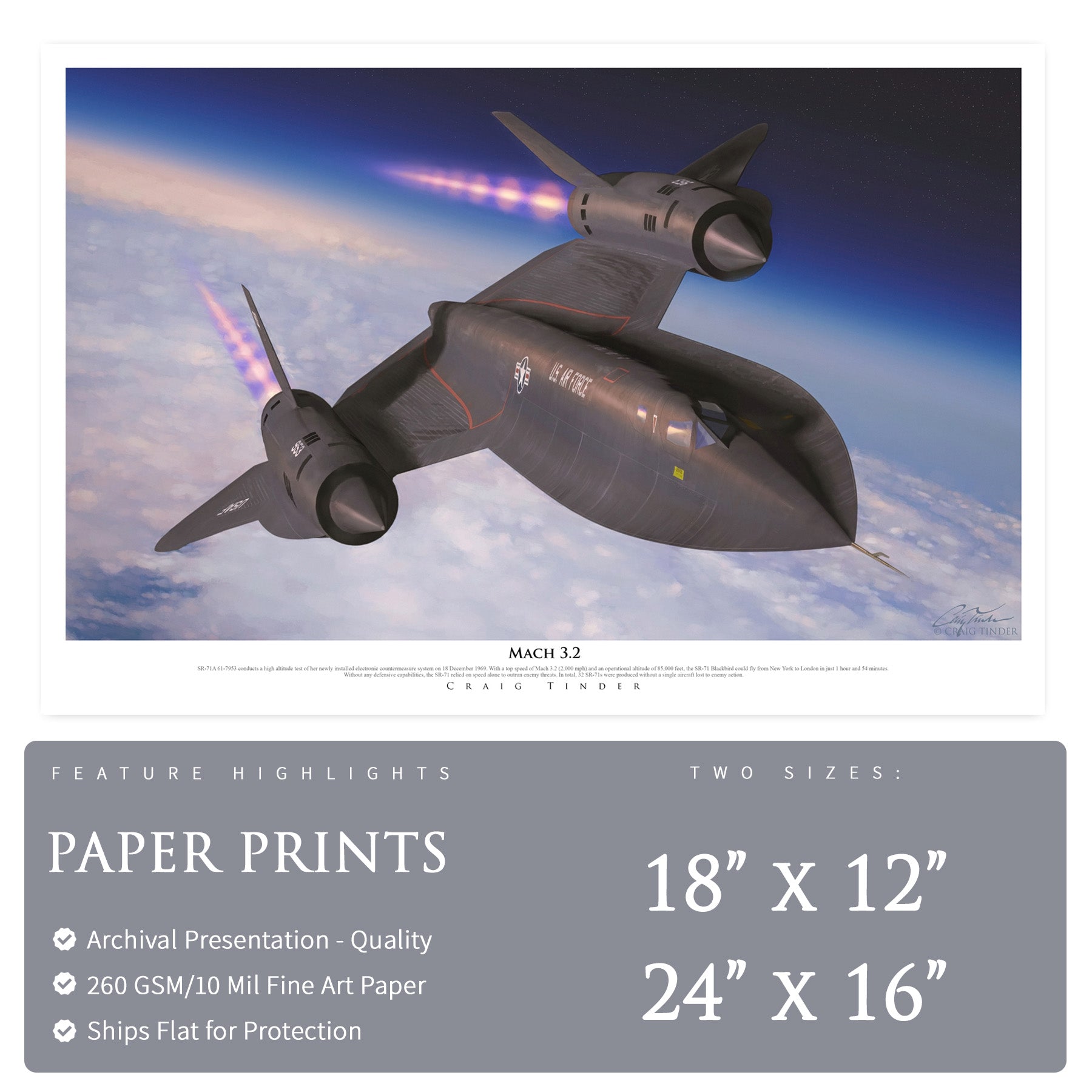
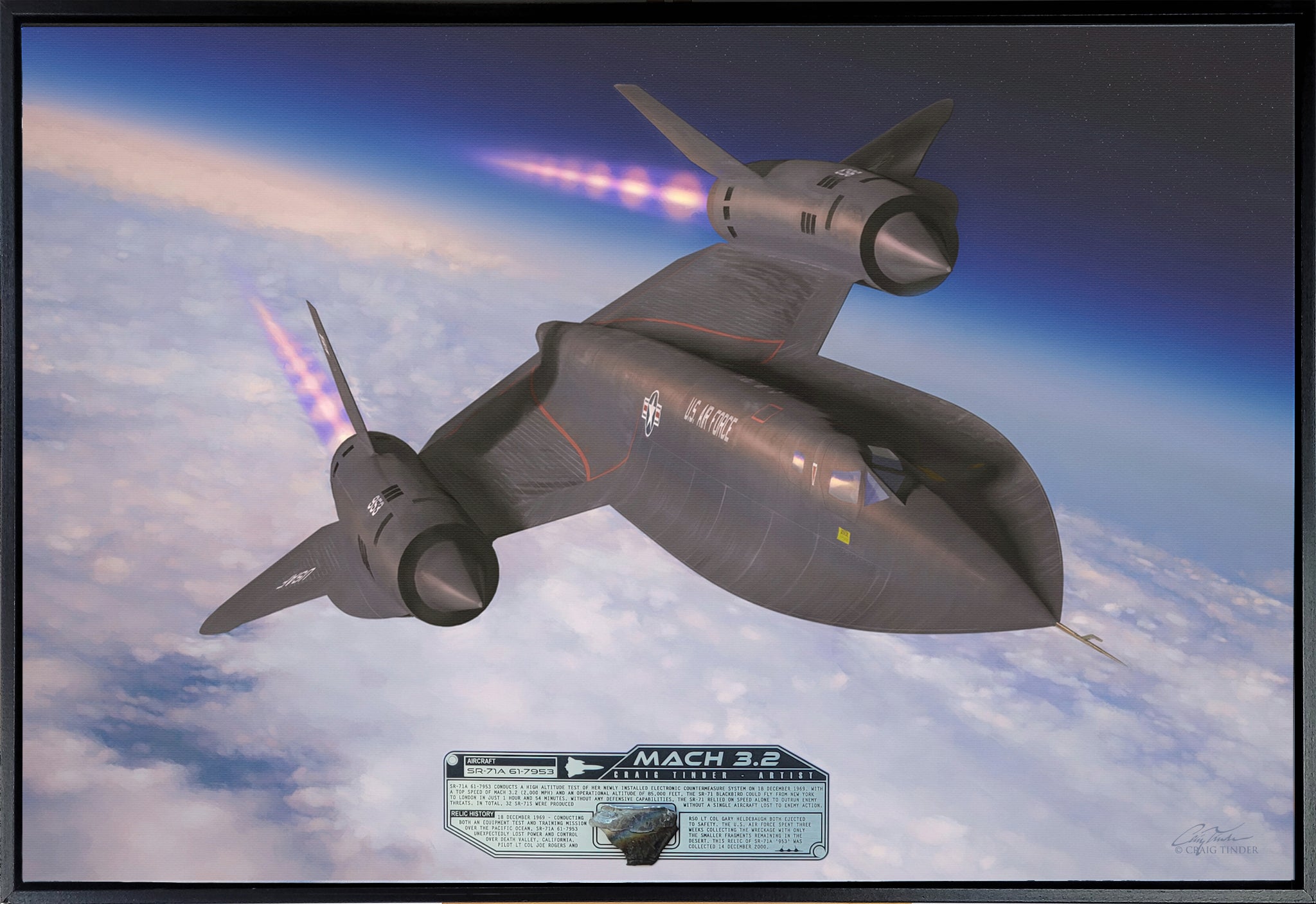
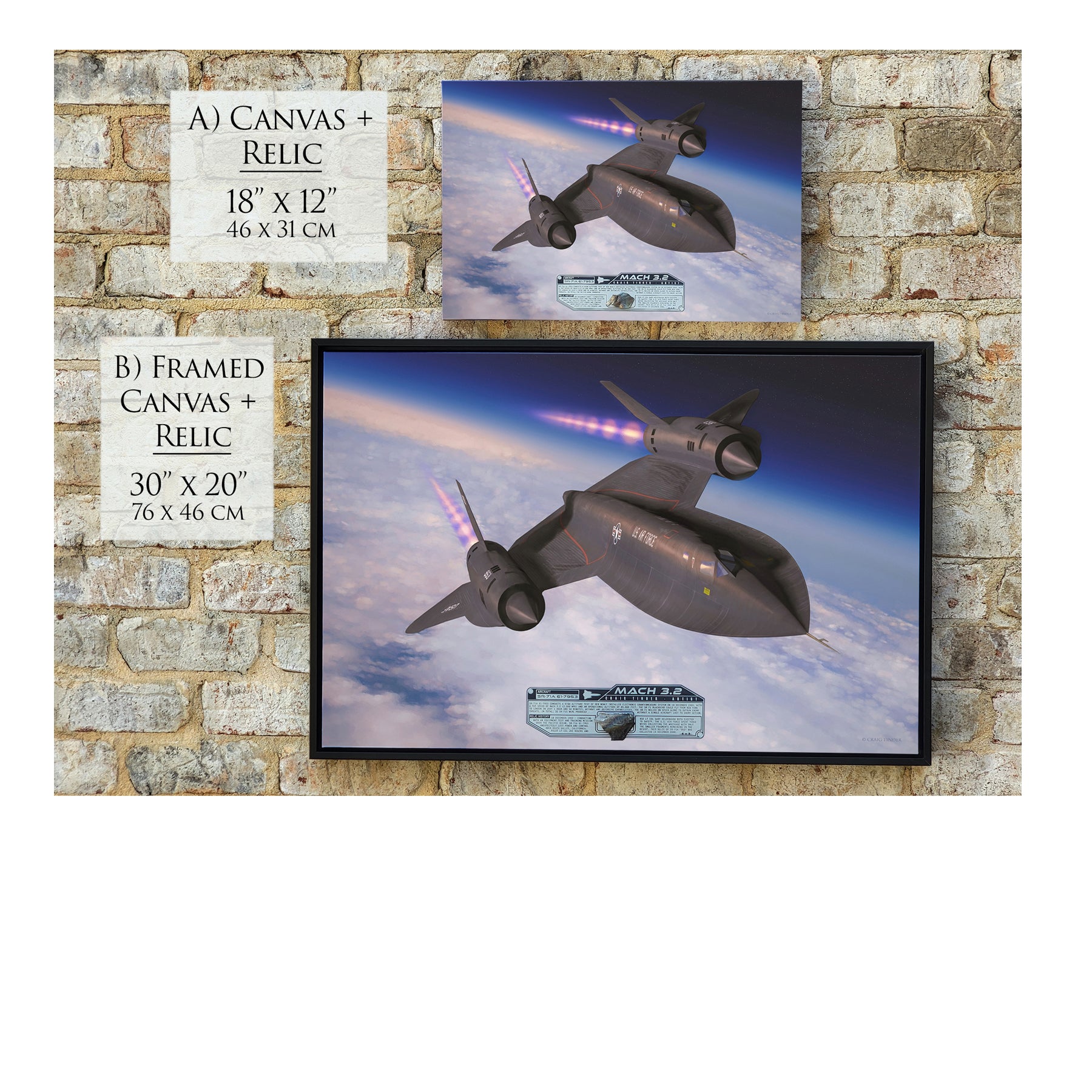
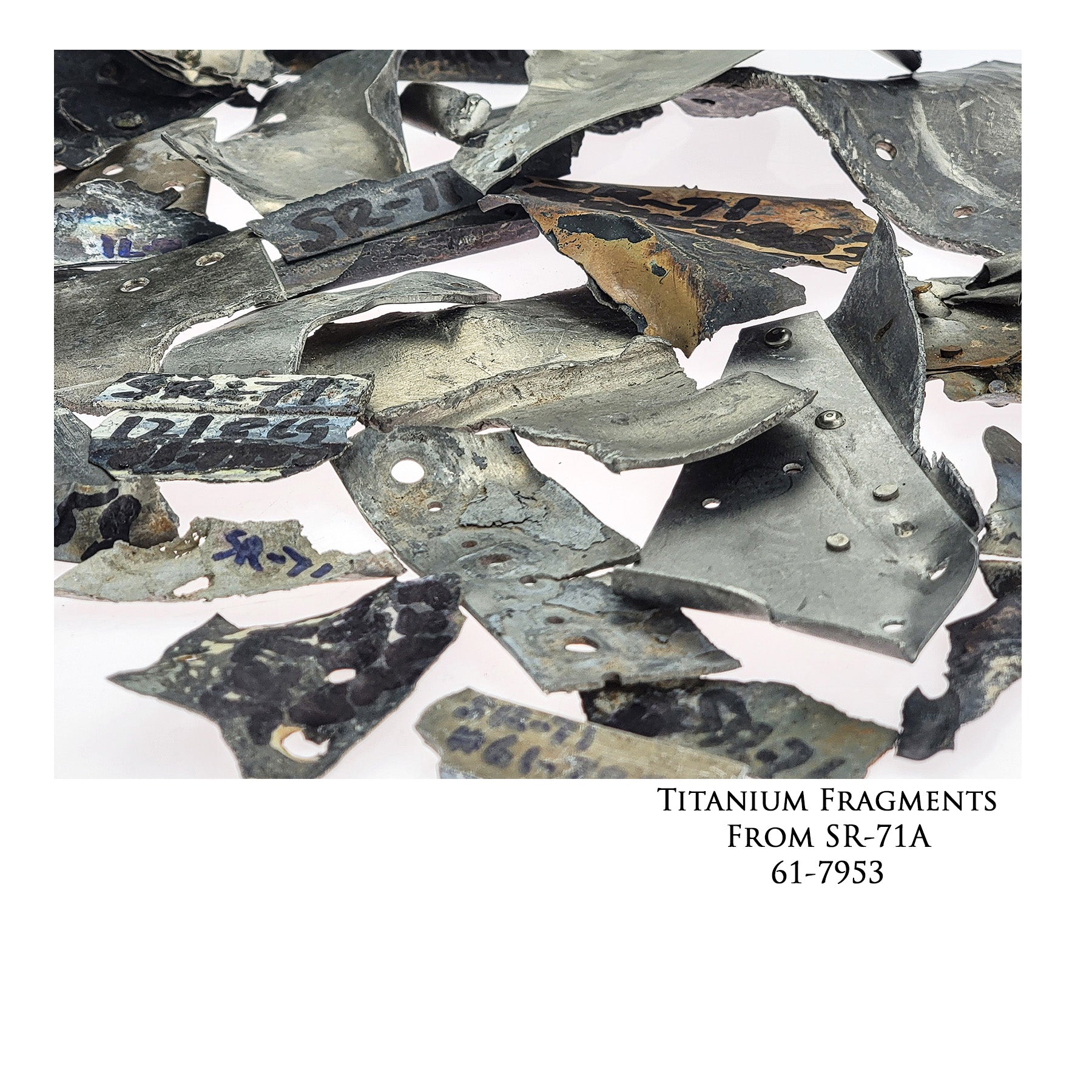
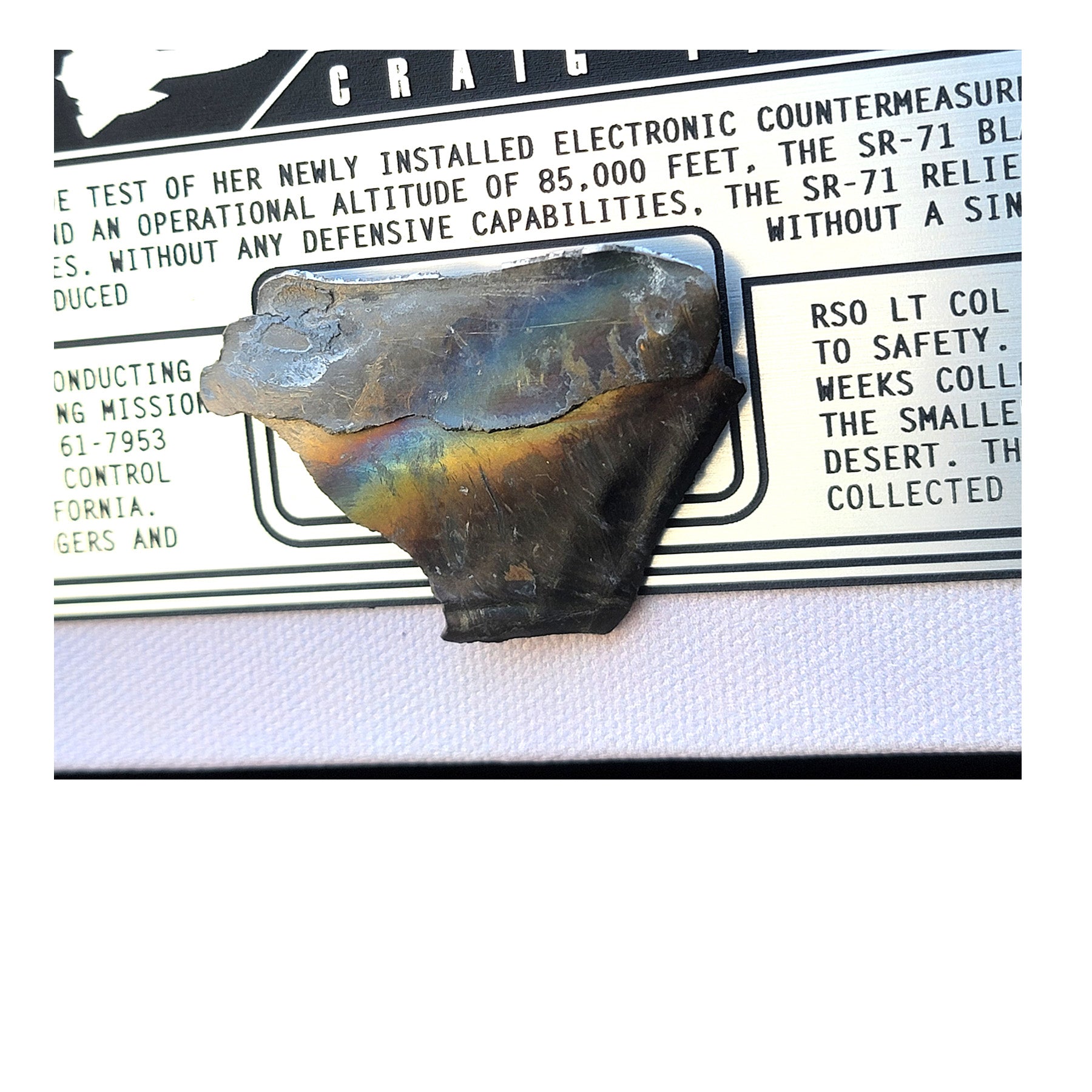
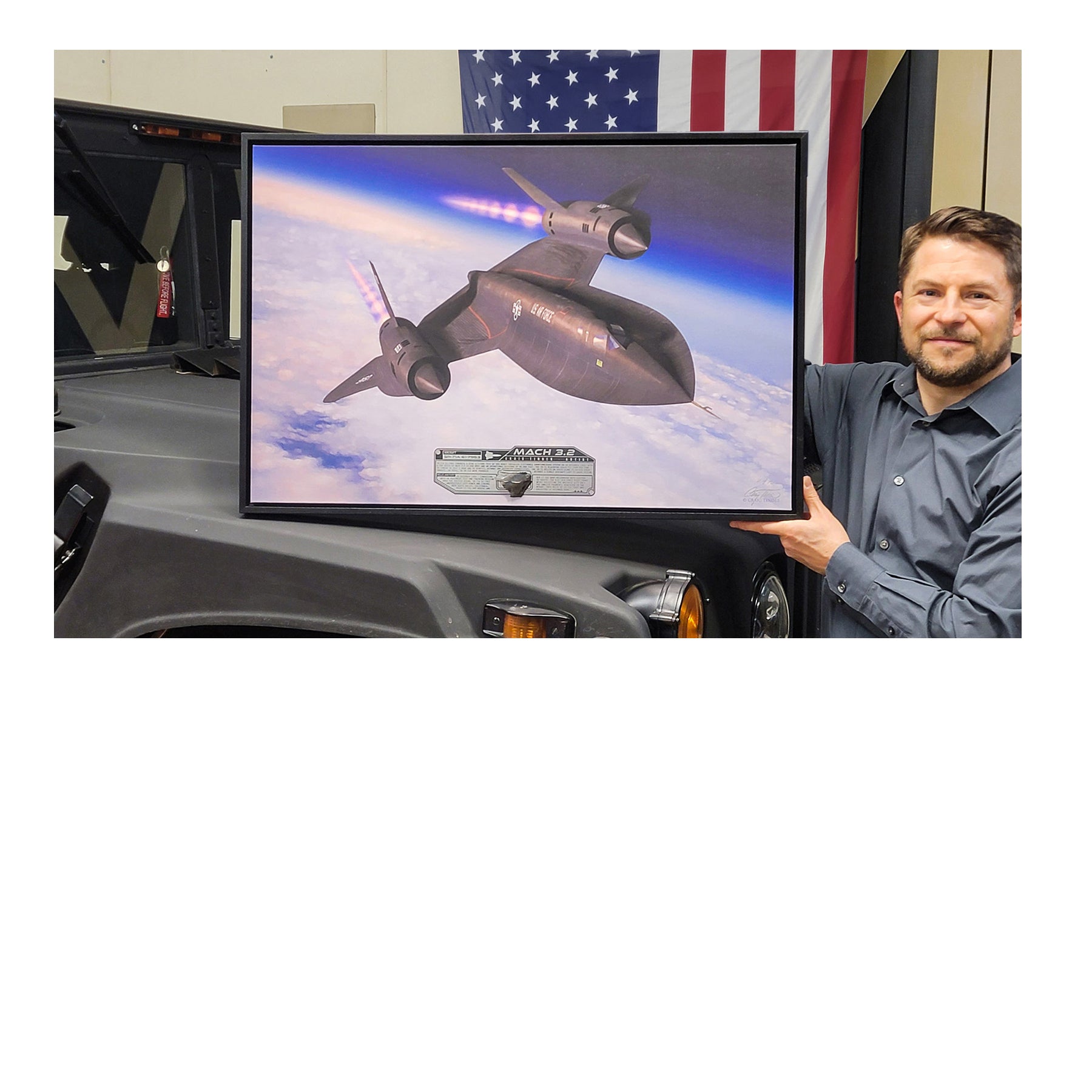

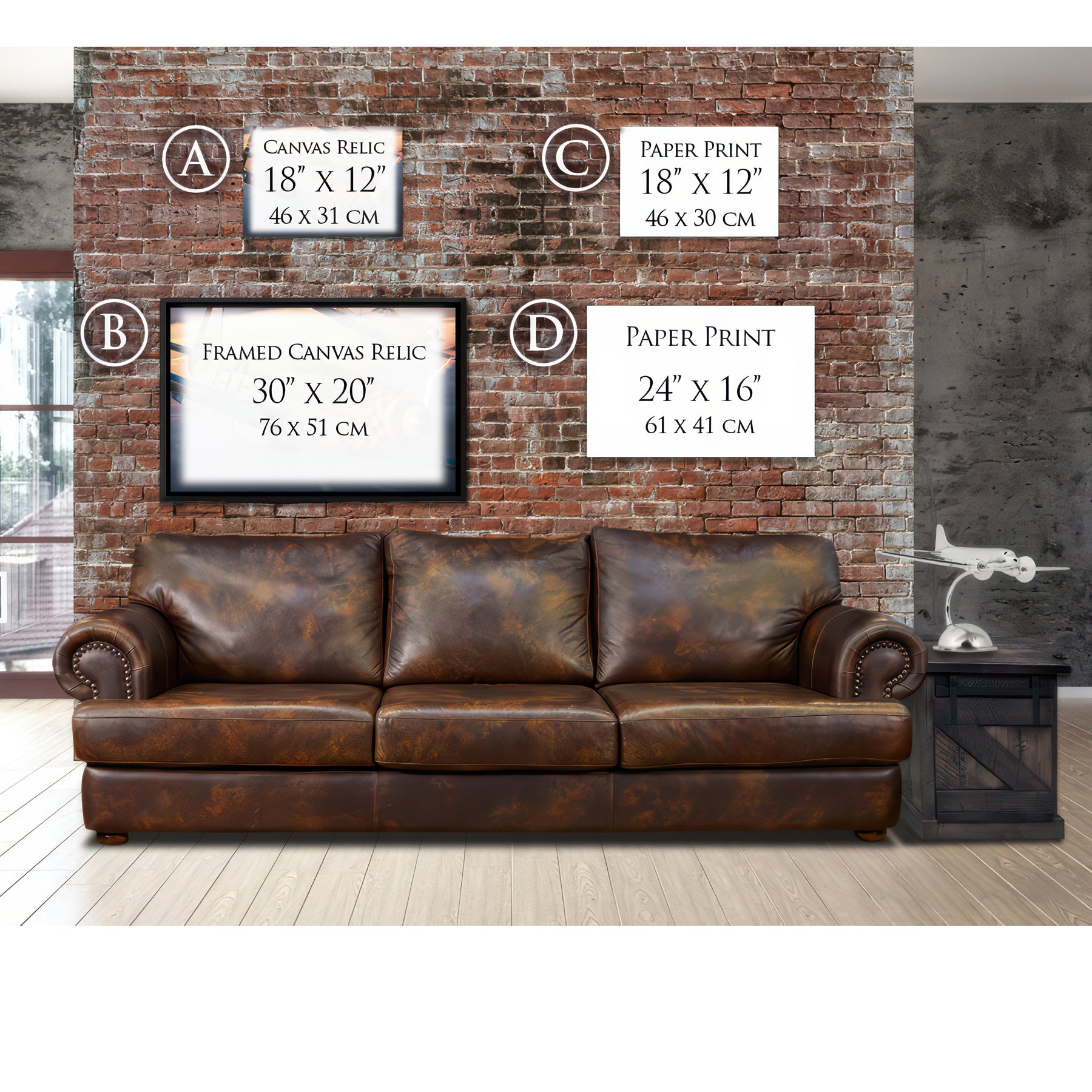
SR-71 Blackbird - Mach 3.2 Canvas | INCLUDES: Titanium SR-71 Relic

SR-71 Blackbird - Mach 3.2 Canvas | INCLUDES: Titanium SR-71 Relic
If you have any questions, you are always welcome to contact us. We'll get back to you as soon as possible, within 24 hours on weekdays.
Shipping Information
Use this text to answer questions in as much detail as possible for your customers.
Customer Support
Use this text to answer questions in as much detail as possible for your customers.
FAQ’s
Use this text to answer questions in as much detail as possible for your customers.
Contact Us
Use this text to answer questions in as much detail as possible for your customers.
Description
About the Relic & Process
This relic from SR-71A #61-7953 was recovered on December 14, 2000, by aviation archaeologist R. Hill near the confluence of two dirt trails in Death Valley, California. After the aircraft's crash on December 18, 1969, the U.S. Air Force spent three weeks combing the area, collecting the larger pieces of wreckage and leaving behind only small fragments. This particular relic, a remnant of one of the most advanced reconnaissance aircraft of its time, was one of the few pieces that remained undisturbed in the desert for over 30 years. Airframe relics from the SR-71 included in the "Mach 3.2" limited edition prints
Airframe relics from the SR-71 included in the "Mach 3.2" limited edition prints
Unlike many other aviation artifacts, this relic has never been in collector’s circulation and was acquired directly from the recovery site. It serves as a rare and tangible connection to the SR-71A #61-7953, an aircraft that embodied cutting-edge technology and speed, yet met a mysterious end during a routine test flight. These fragments offer a glimpse into the legacy of the Blackbird program and the dangers faced by the elite pilots who pushed the boundaries of flight during the Cold War. Many of the Titanium relics exhibit Thermochromism effects in their color as a result from the intense fire in the desert
Many of the Titanium relics exhibit Thermochromism effects in their color as a result from the intense fire in the desert
Disclaimer
By purchasing from Aces In Action, you acknowledge that the product may vary slightly from the images on our website. We use authentic materials from military vehicles and relics, which may contain potentially hazardous substances. These items are not intended for ingestion, inhalation, or use by children. Aces In Action is an independent company, unaffiliated with or endorsed by any other organization. All names, logos, and trademarks are the property of their respective owners and are used for identification only, in accordance with the Lanham Act. Their use does not imply any official endorsement.
